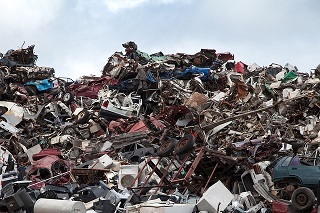5 Cost-Effective Eco-Friendly Building Materials For Your Home

The modern concept of designing a sustainable home focused on having a property that not only runs on but also creates renewable power.
The use of solar panels is one of the best examples of this concept that allows for the construction of buildings that have zero net-energy consumption.
In keeping with the same objective, most modern properties are constructed using green building materials thus reduce their impact on the environment during the construction process.
However, while this may not necessarily create renewable energy, it does boost the overall efforts of having a home with a near-insignificant carbon footprint.
But what is “green” building material?
Of the many definitions used for explaining what green building material is, the following are the best descriptions:
Energy Efficiency – Materials That Limit Heat Loss Or Heat Transfer
As such, a home with these materials will stay cool when cooled or warm when the heat is turned up because of the restricted energy loss.
Moreover, technological advancements have come up with cheap energy efficient building materials.
Sustainable Manufacturing – Materials With A Minimal Environmental Impact, Meaning They Are Made From Recycled Products
The more durable then they have a low probability of damage, repair and replacement, thus making a saving for your pocket and the environment.
Which products suffice to be considered as green building materials?
The following are five top solutions that fit this category:
Recycled Metal

Wooden beams are a common choice for most buildering when designing support frames for homes.
However, there has been a shift to the use of metal beams as they are significantly durable and stronger than the timber.
The manufacture of metal beams is an energy-demanding process. As such, the manufacturers will look into eco-friendly options, such as the use of recycled scrap metal to make the metallic beams.
The scrap consumes 75% less energy during the manufacturing process, and for the recycling mess, there are fewer landfills of these materials.
Plastic Compost Logs
Compared to the traditional treated timber, the plastic compost posts are more durable. They are made from recycled plastic mixed with wooden fibres, which mean there are less discarded wood components and plastics in the environment.
The material may be slightly pricey than the standard lumber, but the plastic compost posts are a worthwhile investment since they are less prone to wear and tear, thus providing long-lasting solutions.
Passive Cooling And Heating Shades
The market has an array of options when it comes to construction materials that can help regulate heat and light coming into or escaping a building.
The use of such products means that a house can be made to be less energy-demanding since it can utilise natural light and regulate internal temperatures.
For instance, light management is possible through the use of tinted glass, mirror glass, and low-emissivity windows. They can be designed to block the penetration of UV rays into the house.
Double-paned windows can help with the regulation and management of internal heat. On the other hand, fabric sunshades and perforated blinds over the windows add to the overall gains of such solutions.
Overall, they are materials that offer more flexibility with the additional benefits of lower installation costs.
Structural Insulated Panels
Structural insulated panels are layered block made of insulated foam sandwiched between cement and board or plywood.

The structural insulated panels or SIPs are a top alternative to fibreglass. Many green builders consider them when they are looking for products with a high insulation rating because they offer a superior building envelope.
SIPs are fire-resistant and very useful in limiting air infiltration and blocking heat transfer.
If the SIPs are installed correctly, they can significantly lower the energy consumption of a home by 50%. They are eco-friendly since they are fewer resources and less energy to produce compared to many other construction solutions.
Tankless Water Heaters
The conventional furnace water heaters are designed to heat water and store to ensure there is a consistent supply around the clock.
Therefore, these tanks should regulate the temperature even when there is a low demand or use of water, and that translates to high energy consumption.
The tankless water heaters offer an energy-efficient alternative that uses a slightly different approach. They ensure there is a reliable delivery of hot water by only heating the water that flows through the system as and when needed.
Unfortunately, the flow rate of the traditional furnaces is better than that of the tankless water heater systems.
The tankless water heater systems can delivery around 2 – 5 gallons of water per minute, which can suffice to take a shower or do laundry. However, that rate may not suffice for doing the two things simultaneously.
On the bright side, the tankless water heaters are not that costly to buy or install. You can have one set up at each point of use. It will ensure that you have adequate delivery of hot water throughout the home without having to worry about the heating bills.
Furthermore, the tankless water heater systems are a cost-effective investment that pays for itself over time. They can last ten times longer than the furnace water heaters and require less maintenance or repairs.
Why Green Construction Is Gaining So Much Traction?
Most of the environmentally friendly solutions mentioned above have been around over the last one or two decades, and more and more “green conscious” builders are now using these materials.
Cost is one of the factors behind the slow rate of adoption of these eco-friendly building materials. However, the economies of scale coupled with better manufacturing methods have seen most of the green building solutions take their place on the podium with most of the conventional solutions.
Furthermore, the green building materials are highly durable and have a smaller carbon footprint that makes them a cheaper and cleaner alternative in the long run.